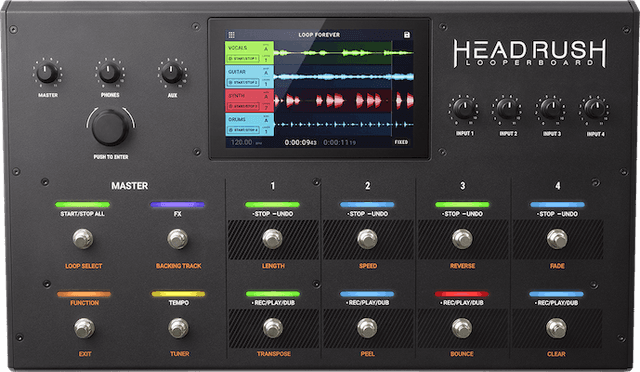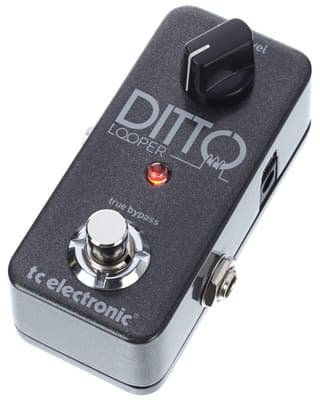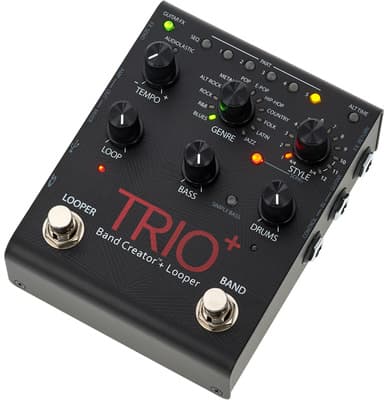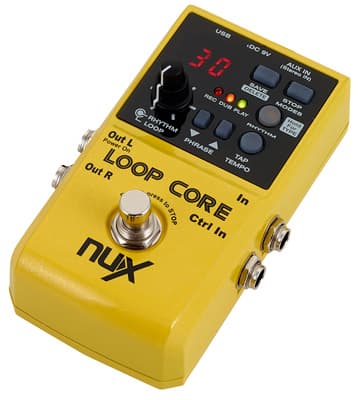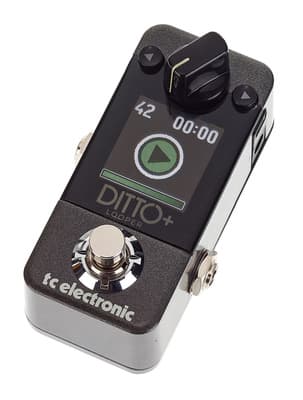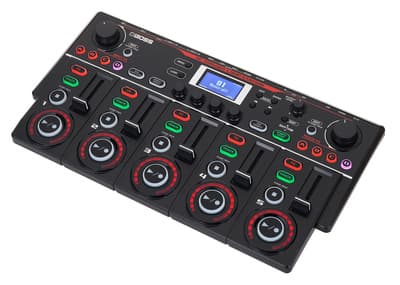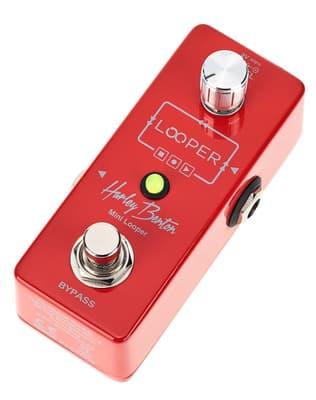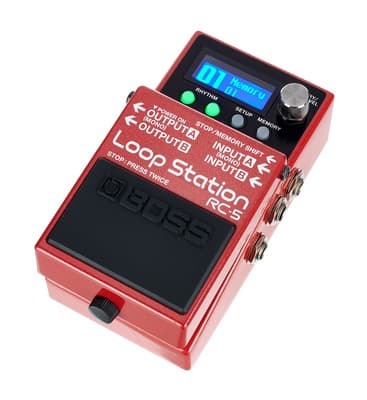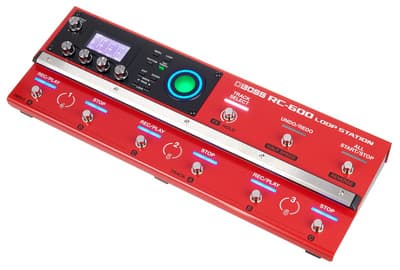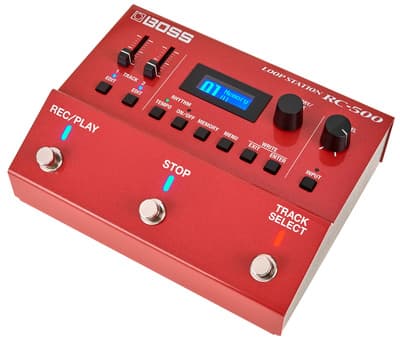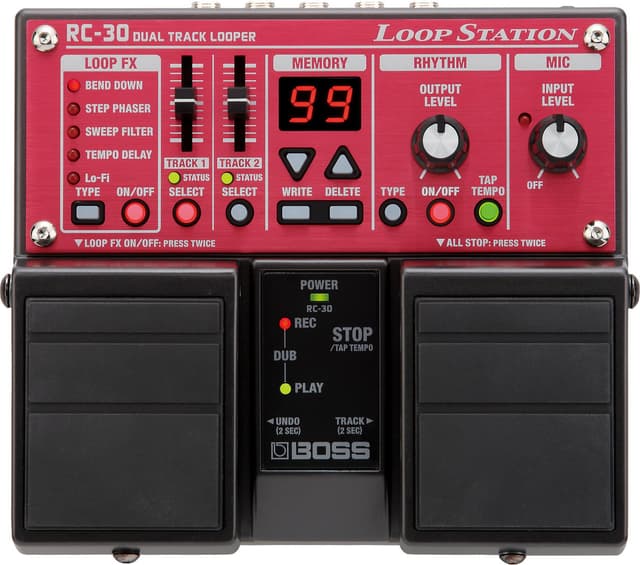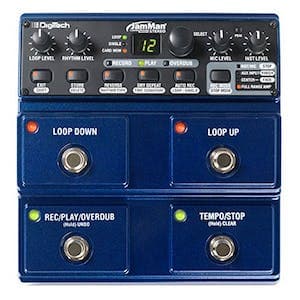Boss RC-10R Loop Station - Test & Review
Compact Loop Station With a Good Drum Machine
Besides its function as a looper the Boss RC-10R comes with adrum machineoffering a large number of pre-sets and what we considera fantastic and well-sounding selectionin a small and light case. In our review, you will learn everything you need to know about the device by the Japanese manufacturer Boss, advertised as the "Rhythm Loop Station".
Range of Features and Specifications
The RC-10R is a Loop Station with a recording capacity of six hours. It is possible to store your loops in a total of 99 memory slots. The high-quality signal processing of the RC-10R works on 32 bits. Its dimensions of 10.1 x 13.8 x 6.3 cm and a weight of only 620 grams make device pretty compact, so you can easily take it anywhere you like. Regarding the power supply, however, there is only the option of the included AC adapter, whilst battery operation is not supported.
In- and Outputs
The RC-10R has a relatively small number of connections, which is certainly caused by the compact format of the Loop Station. There are two large jacks that can be used as a stereo input, whilst the first jack also works as a mono input. As an output, there are another two large 6.3mm jacks that can be used as mono or stereo output. An additional jack allows you to connect up to two external foot switches* or an external expression pedal* to assign some of the features of the Loop Station to an external switch.
On one side of the device, you can find a MIDI output as well as a MIDI input to control the Loop Station. However, these are not conventional MIDI jacks, but two small 3.5mm requiring an adapter cable to connect the MIDI devices, which is separately available at Boss.


In addition to the MIDI jacks, there is a micro USB port (type B) to connect the RC-10R to a PC or Mac. A cable is not included but, since it is a widely common port, you might have the right cable lying around somewhere. We're a bit disappointed that there is no option to connect an additional audio source, like an MP3 player or smartphone. Many of its competitors offer a small jack for this purpose, which is unfortunately not the case with the RC-10R.
High-Quality Drum Machine
We believe the integrated drum machine to be the highlight of the RC-10R. With its 280 pre-set rhythm patterns, it offers a selection to please every taste with the right rhythm. The individual patterns are organized by genre, so you can access your favourite beat more quickly: pop, rock, soul, hip-hip, jazz, electro - there shouldn't be a genre missing. Each of the pre-set patterns consists of two parts, e.g., one for the verse, one for the chorus. When switching from one part to the other, a transition fill is played. Likewise, there are intro and outro fills you can use when starting and stopping the drum machine.
To add to the pre-set rhythm patterns, it's possible to upload up to 50 patterns of your own choice to the RC-10R. To do so, especially created MIDI files can be transferred to the device from your PC or Mac using the relevant software by Boss. For this purpose (as well as for transferring recorded loops), the RC-10R can be connected to a computer via the integrated USB Micro-B port.
We found the sound of the drum machine to be pretty good. The variations and fills make the rhythm patterns of the drum machine sound more natural than devices that don't support fills for transitions. The patterns meet the characteristics of each each genre, and the selection of patterns is big enough to not become monotonous. All these features ensure that you can not only jam with the device, but also record entire songs.
In this video, we used the RC-10R's built-in drum machine to play a metal song. We very much enjoyed switching between patterns live. After a few attempts the controls became quite intuitive, and the song has a more rounded feeling when you can easily activate an outro fill at the right moment.

Buttons and Switches
From our perspective, the arrangement of buttons and switches is very neat. On top of the Boss' RC-10R there are two foot switches, one of which is responsible for operating the looping feature, while the other controls the drum machine. Above these there are two LED rings remotely resembling a tachometer, displaying in the centre via text which looper track is currently active and what state the drum machine is in. In between these displays are two knobs to control the volume of each loop and the rhythm pattern.
At the very top on the left, there is a small LC display that shows two lines of information, such as the current memory slot, the selected pattern, the beat and the set BPM. You can switch between the entries on the display and set the individual data via a pushable knob. Last but not least, there are two small buttons for "menu" and "exit", also serving as save or delete buttons when pressed at the same time.
The Handling
Basically, all the settings can be adjusted with the knob next to the display. By pressing the knob, you can switch back and forth between the individual parameters on the display. A small, white arrow indicates which parameter is currently selected. Then you can set each individual value after selecting it by turning the knob.
We believe that Boss made a good decision by equipping the device with two separate controls to set the volume of the looper and drum machine directly and independently. While playing, the looper and drum machine can be controlled via the two foot switches on the device.
The left foot switch is designed for operating the looper. When pressed once for the first time, the recording begins, while the last recording can be undone by pressing the switch for longer.
When you press the right foot switch, you activate the drum machine with the pattern selected on the display and by pressing it for longer it changes from part 1 of the pattern to part 2 - how simple.

One positive aspect worth mentioning is the so-called sync mode, which can be activated by pressing and holding the right foot switch when the drum machine is not activated. As soon as the sync mode is activated, you can start the drum machine at the same time as the recording with only one press of the foot switch.
By the way, the device does not have a power button. It automatically turns on or off depending on the power supply being connected or disconnected. Whether you're a fan of this attribute is of course a matter of taste, but we would have liked a proper switch better.
As is usual at Boss, the documentation for the device is neat. In addition to the user manual, a PDF of the parameter guide is included, where you can find all available pre-set patterns before buying.
Small flaws unfortunately arise when operating via the two foot switches. These offer a wide range of features but not all of them can be read directly from the device. You might need some practice in the beginning until you know how to handle all features by heart and do not need the manual anymore. However, this is not too big a flaw, but rather "whining at the highest stage".
Our video of the test
We have also published a video review of the RC-10R, in which you can get an accurate picture of how the device works:

Conclusion
In addition to the usual looper attributes, the Loop Station RC-10R by Boss offers a well thought-out drum machine with good sound and many variations, and thanks to the two available tracks and two different rhythm parts per pre-set, it basically provides you with everything you need to record entire songs. We believe the device to belong to the absolute upper class in the beginner's section but it should also please advanced loopers. At around £240, the RC-10R unfortunately only comes with a small selection of connections, but from our experience this lack is compensated by the (after a little practice) intuitive operation and the progressive drum machine - all basic connections are available anyway.
Despite minor flaws, we're glad to recommend the RC-10R because of its great drum machine, which is an excellent choice for beginners and advanced users who will enjoy the device for years to come.
More reviews
Publish date:
Last updated:


